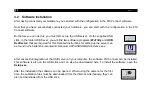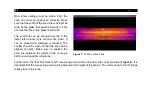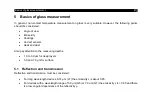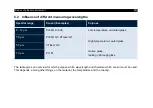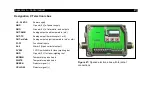
-
36
-
4.2 Low-E measurement
The glass system has the special feature that it can also be used for low-
E measurements. For this, some things msut be taken into account. Low-
E glass is usually referred to when the emissivity is significantly lower than
0.3. This depends on the type of glass and may well be values as low as
0.03. To be able to measure at such low emissivities, the temperature
range must be changed. For this purpose, there is a button labeled Low-
E on the control unit. If this button is pressed in the "Top-down GIS"
layout, the temperature range changes to 0-250 °C. In this range it is then
possible to measure Low-E glass.
Alternatively, the signal can also be taken from a controller (e.g PLC) and
be directly connected to the control cabinet (for connection see
chapter
).
Figure 20: Control unit for
switching to Low-E
Furthermore, care should be taken to have as few bare parts as possible in the camera's field of view, as this
can influence the measurements in unfavorable conditions. This can be seen, for example, when streaks
appear in the linescan image. All bare surfaces should therefore be covered or blackened if possible. In the
case of the glass system, the components that could cause reflections are already blackened.
Summary of Contents for Top-down GIS
Page 1: ...Operators Manual Top down GIS Glass Inspection System ...
Page 5: ... Table of contents 5 Appendix A Control cabinet 43 ...
Page 11: ... Technical Data 11 Figure 1 Dimensions mm shutter system ...
Page 12: ... 12 Figure 2 Dimensions mm switch cabinet ...
Page 19: ... Technical Data 19 CT G5L SF optics ...
Page 34: ... 34 Figure 16 Linescan in PIX Connect software ...
Page 48: ...Top down GIS MA E2021 07 A ...



